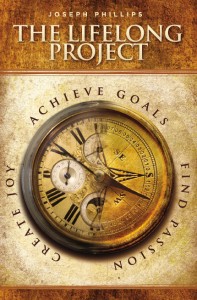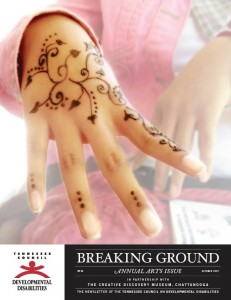The upshot of arranging my life so that my work is portable is that I can spontaneously move the whole shebang outside for the day. This is the view as I work on some pretty wonderful contracted tasks this afternoon.
Bliss.
Coach - Facilitator - Trainer

The upshot of arranging my life so that my work is portable is that I can spontaneously move the whole shebang outside for the day. This is the view as I work on some pretty wonderful contracted tasks this afternoon.
Bliss.
 Over the course of several Tuesdays — Transition Tuesdays — I’m sharing one area of my practice that thrills me more than just about anything; coaching individuals with disabilities and their families as they transition from one life stage to another. Please note that while I’ll be describing a coaching scenario that is very similar to several families that I’ve worked with, it is an amalgamation of those conversations and is not based on any one family.
Over the course of several Tuesdays — Transition Tuesdays — I’m sharing one area of my practice that thrills me more than just about anything; coaching individuals with disabilities and their families as they transition from one life stage to another. Please note that while I’ll be describing a coaching scenario that is very similar to several families that I’ve worked with, it is an amalgamation of those conversations and is not based on any one family.
In Part I, I introduced you to Jon, Kate, and Dan and wrote a little about my approach to coaching families through the transition planning necessary to move students with disabilities from high school into an interdependent, adult life.
In Part II, I shared more about my role in working with Jon, Kate and Dan. I also talked some about what it means to be “humanistic” in coaching.
Today, I’m outlining the process and the steps I’m using to walk Jon and his parents through his transition. And when I say “process and steps” I mean a delightful mix of gentle fact-finding, person-centered conversations, and fun facilitation with colors and markers and BIG paper! Wooohooooo!
Unfortunately, the art supplies don’t come up until later in this series, but if you were working with me you’d see them within about 10 minutes of entering my studio. I do, however, want to give you an overview of the steps and stages in the process — any coaching process — so that when we return to Jon’s story you’ll have a road map.
So, here goes…
Steps in the Process
While coaching a family differs in some ways from coaching an individual or team within an organization, many of the steps are similar. Establishing and maintaining trust is the most essential element for a successful coaching experience – one which David Peterson advocates spending the first coaching session developing through the exploration of the individual’s personal goals.
The coaching process – in spite of being person-centered in the humanistic approach – is not a meandering conversation. It follows a pattern of development that has been studied, practiced, and tweaked – while still remaining open to the needs of the individuals I’m coaching.
When provided by the professional consultant, [coaching] is more commonly preplanned and follows a structured seven-step process: (a) initial needs analysis, (b) contracting, (c) data gathering, (d) specific goal setting, (e) coaching, (f) measuring and reporting results, (g) transitioning to a more long-term development effort. – Lewis Stern
While I may not announce, formally, at the beginning of a coaching session, “Welcome to our data gathering phase.” It’s certainly happening. Some formats lend themselves to a very close following of Stern’s steps. Others blend them more. Regardless of how distinctly these activities happen, they are each essential. So, let’s break them down a little here and then I’ll describe them more fully as we follow Jon, Dan and Kate through their work.
In each step of the process, the needs of both Jon and his parents must be balanced. In corporate coaching, we have to balance the organization’s expectations (because they are typically the ones who pay me) with that of the coachee. In Jon’s case, the equivalent voices to the corporate client’s organization are his parents, Dan and Kate. They’re footing the bill and have quite a bit of influence (if not actual control) over Jon’s life choices. However, it is Jon’s life after all. Balance. Balance. Balance. It comes up a lot in coaching. So much so that I may have to come up with another word for it.
Initial Needs Analysis
In the simplest terms, the initial needs analysis involves finding out why I’ve been contacted by a family. And here is where I reveal that my number one job – the actual reason I’m hired – is to ask the questions folks have been staying up at night thinking about and then helping them articulate the answers. Where are they? Where are they hoping to go? What do they want to avoid? What have they tried before? What did they learn from that? Sometimes all of the answers are available just by talking to the immediate family, but usually it involves some extended conversations.
Contracting
I’d rather pull out my eyelashes than go legal on folks, but the reality is that contracting is about knowing everyone’s roles, rights and responsibilities on the front end. At this stage, we’ll agree on a format and a timeline. We’ll also agree that this will be an iterative process, that is, we will all have some freedom to review the contract, discuss how it’s going, and decide whether we need to adjust the plan.
Data Gathering
The data gathering phase never actually ends, but there is a period of time when I’m digging through all of those facts and beliefs and events and getting them organized into visual formats that lend themselves to decision making. Sometimes this looks like questionnaires. Sometimes it involves interviews. Often times it looks like lots of sticky notes and markers and more of those questions I’m known for. Once we gather really good information about the current reality and the hopes, dreams, challenges, and fears that need to be taken seriously in the future, we’re ready to start planning.
Specific Goal Setting
I don’t know that anyone on this planet has escaped the SMART goal planning acronym. It’s been around long enough that there are people arguing over what the R stands for. So, I won’t go there, but I will say that goal setting (and keeping!) is an art. In order to keep everyone moving toward what matters – creating doable action plans that will support them achieving the dreams they hope to fulfill while overcoming the challenges and either avoiding or confronting their fears – I use some pretty cool tools. The key is to capture what the family is trying to achieve in some permanent format that is accessible and revisable. It’s also essential that there is consensus on what needs to happen, who is going to actually do the work, when they are going to accomplish that task, what they are going to do once that task is completed (this step, my friends, is where I see 99% of plans fail – people do stuff and then sit on it), and why they are doing it in the first place.
Coaching
Here is where we start coaching. Wait. What? We’ve done all of this work and we are nearing the end of the steps and now you start coaching? Yes. Now I start coaching. I’m sure I’ve done some steering before now. And I’ve certainly been facilitating conversations and asking questions and organizing information. But it isn’t until we have a plan that I really get to coach. Here’s where we start hitting obstacles. Before now we could be as pie in the sky as we wanted. Now we have to actually implement those plans. The reality is that there will be some revision and some renegotiation and some steps that get deleted or completed quickly. As a coach, it’s my role to keep the train on the tracks.
Measuring and Reporting Results
Checking in is essential to a successful coaching relationship. Some folks call this the accountability stage. Did you meet your goals? If you have a 6-12 month goal horizon, we can quickly tell if we’re there. The reality is that, while we will have short-term action steps, many of the coaching plans I put together look ahead at least a year and, often, many years. At this stage of the process, I am going to be available on a very regular basis as those action steps start being accomplished and we create momentum and then fade my supports as the process of making plans and carrying through on them becomes more routine for the family. That’s the point when I start working myself out of a job.
Transitioning To A More Long-Term Development Effort
I have only done a good job of coaching a family if, along the way, I teach them how to build and sustain momentum toward living the life they really want to live. I help them learn the steps of building consensus. They practice listening and communicating effectively as they work toward goals that may not always be their first choices. They get pretty good at using the tools of creating good plans and goals and then – here’s the big then – actually acting on those plans. Once some of the big rocks have been removed from the family’s path, they are typically pretty comfortable continuing without checking in with me. Some choose to keep calling periodically for accountability. Some disappear for years, only to call me back when they come to their next transition.
So, that’s the big picture. It really is a pretty straight forward process. Of course, people being people, it does get messy from time to time, but that’s why we work so much on establishing that trust. It’s vital when we’re right in the middle of a big transition that everyone has a sense that we know what we’re doing or feels safe enough to speak up if they want to adjust the plan.
In Part IV we’ll take a closer look at the person-centered assessments I use when coaching a family through transition. For folks who have files that gain weight faster than they do, this is a tender space and I walk very carefully here. There are some lovely tools for getting that foundational information collected that honors the individual I’m coaching.
For folks who like to know more, here are some references from this series:
Brouwer, P. J. (1964). The power to see ourselves. Harvard Business Review, 42(6), 156-165.
Helen Sanderson and Associates. (2007). Person centred thinking. Liberty, Missouri: HSA, USA.
Pearpoint, J., O’Brien, J., & Forest, M. (1993). PATH: Planning possible positive futures. Inclusion Press: Toronto.
Peterson, D. (1996). Executive coaching at work: The art of one-on-one change. Consulting Psychology Journal: Practice and Research, 48(2), 78-86.
Stern, L. (2004). Executive Coaching: A Working Definition. Consulting Psychology Journal: Practice and Research, 56(3), 154-162.
Stober, D. R. & Grant, A. M. (eds.) (2006). Evidence based coaching handbook: Putting the best practices to work for your clients. Hoboken, NJ: John Wiley & Sons, Inc.
 After years of seeing the “coincidences” of my life come together to form gorgeous synergies, it should be old hat by now.
After years of seeing the “coincidences” of my life come together to form gorgeous synergies, it should be old hat by now.
It isn’t.
A little background first: over the past couple of years, I have managed to gradually add 15 – 20 pounds back to my frame. There are lots of causes… the world’s most stressful job, several life-altering emergencies, a happy marriage, and lack of focus on my health as I moved through all of these events.
After months of thinking about it, I managed to get past the precontemplation stage and made it to the gym. ::taking bow:: My hope is to get back into the habit of paying attention to my body… exercising, relaxing, eating what nourishes me.
This stage of thinking and planning over the past several months wasn’t simply about my health. It involved gestating several other crossroads initiatives. And the entire time I am working out all of these details, I am feeling a pull to something bigger.
So where’s the synergy?
As I sit on my gorgeous sun porch and work on a variety of projects — all while watching the birds and deer and turkeys wander by — the realization that I am connected to this beautiful planet through more than my laptop keeps poking at me. But how? What project? Where do I put my energies?
I go to my facebook account to check on my pokes and farms and see an invitation from my high school chum, Joseph Phillips. He’s been all giddy for weeks about an project launch of his, and rightfully so.
10 Goals 2010
Joseph’s new project is all about the little ways we contribute to the bigger stuff. He has way more information over at 10 Goals 2010 at the Lifelong Project but the gist is this:
Be kind.
Do good work.
Help others.
Make friends.
Encourage.
Give your time.
Give love.
Achieve goals.
Share.
So, Joseph, old pal, I love this idea. I’ll spend some time contemplating how these goals get integrated into my daily routine. Perhaps this is the next phase of the MegaChallenge 200. My impulse is to say I’ll attempt to integrate each of these goals into my yearly 200-times-gets-me-there mentality. I don’t know how that would look yet.
My first goal is to figure that out.
 The workout thing keeps not happening. Well, not the kind that occurs indoors on a piece of equipment.
The workout thing keeps not happening. Well, not the kind that occurs indoors on a piece of equipment.
However, upon review of the original MegaChallenge Regulations, I am reminded that it wasn’t about working out on a piece of gym equipment–it was about moving. So, in spite of the fact that the stationary bike in the basement is doing a superlative job of the stationary part of its title, I managed to get in a workout. We walked 5 miles (14/200) on a gorgeous trail this morning.
I have to give kudos to municipalities that take the time/money/effort to design and build green spaces into their plans. Our new hometown has gone to incredible lengths to put in all sorts of walking/jogging/bike paths. They run along rivers and through shady areas and near parks and by the library. Truly lovely.
I am not counting the very long stroll we took through an art festival this evening. Yes, it was movement and technically counts. However, I got more of a workout laughing out loud at the amazing hula hooping going on at one of the booths than I did from the walk.
Food? I was stellar. We packed a bag of water and healthy snacks for both excursions. We ate our meals at home. I didn’t even glance at the funnel cakes and other fried fair fare.
All in all it was a wonderful day.
 No, I didn’t fall completely off of the planet.
No, I didn’t fall completely off of the planet.
I took a job that involved working for an organization that required that I curtail a significant portion of my advocacy/openness/personality. I learned a whole boatload of new skills, made a couple of terrific friends, and discovered that I am much happier when I can openly share what I think and who I am.
So, to catch you up on a whole year’s worth of events, we’ll do the bullet list trick.
So, sports fans, it is time to get back on the MegaChallenge Bandwagon. I still like the 200 workouts in a year deal. I still like basing it on the MegaConference schedule. That means I would have to kick some major pre-contemplation into gear and get a move on.
We installed a workout room in our basement–so I literally have no excuses for not working out. Well, not any that hold water.
I am also thinking that keeping track of the stuff I eat via fitday would be a good idea.
I am doing a whole lot of thinking.
Time for some doing!
I have been called a, "PollyAnna, sugar-coated idealist." I like to think of myself as more optimistic than that. Read More…
Copyright © 2025 Gina Lynette · All Rights Reserved · Log in
your thoughts